#Edna Mae Durbin
Text
17 aprile … ricordiamo …
17 aprile … ricordiamo …
#semprevivineiricordi #nomidaricordare #personaggiimportanti #perfettamentechic
2022: Catherine Spaak, attrice, cantante e conduttrice televisiva belga naturalizzata italiana. Figlia dell’attrice Claudie Clèves e dello sceneggiatore Charles, e sorella dell’attrice e fotografa Agnès. Si è sposata con l’attore Fabrizio Capucci, da cui ha avuto una figlia Sabrina, con Johnny Dorelli, da cui avrà un figlio Gabriele, con l’architetto Daniel Rey e infine con Vladimiro Tuselli.…
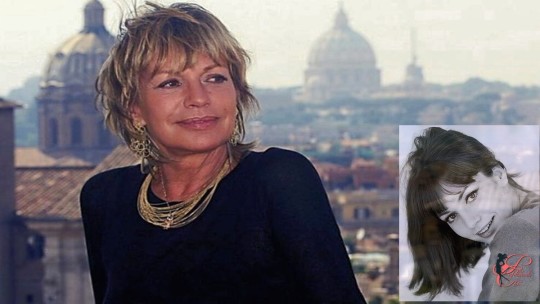
View On WordPress
#17 aprile#Barbara Bush#Barbara Pierce Bush#Catherine Spaak#Doris May Green#Doris Roberts#Edna Mae Durbin#Gilles Remiche#Hollis Resnik#Lady McCartney#Lillian Lorraine#Linda Louise Eastman#Linda Louise McCartney#Linda McCartney#Michael Sarrazin#Oleg Cassini#Oleg Cassini Loiewski#Ricordiamo#Sergio Fantoni#Toni Frissell
0 notes
Text

Deanna Durbin, born Edna Mae Durbin, actress, singer (born at Winnipeg 4 Dec 1921, died April 2013).
18 notes
·
View notes
Link
Check out this listing I just added to my Poshmark closet: Deanna Durbin 24 Greatest Hits.
0 notes
Text
The Wizard of Oz: Facets of Filmmaking
While The Wizard of Oz is often remembered as a magical experience, the making of this masterpiece was anything but.
Nothing went smoothly. Not screenwriting, not directing, not shooting, not casting, not even costuming went well, made even worse by the end result of box office bomb when it was released. It’s hard to imagine a timeless classic coming out of a production as big a wreck as this was.
You guessed it, today, we’re unpacking the behind-the-scenes story of The Wizard of Oz, taking a look at a brief history of events with plenty of trivia. Buckle up, this one is going to be rough.
Let’s dive in, shall we?
The problems in production started immediately with something rather important: the screenwriting. While there are three official writers, (Noel Langley, Edgar Allen Woolf, and Florence Ryderson) there is a whopping total of fifteen additional writers that remain uncredited. Everyone was contributing their own ideas and the end result had to be trimmed down considerably to be anywhere close the film we know now.
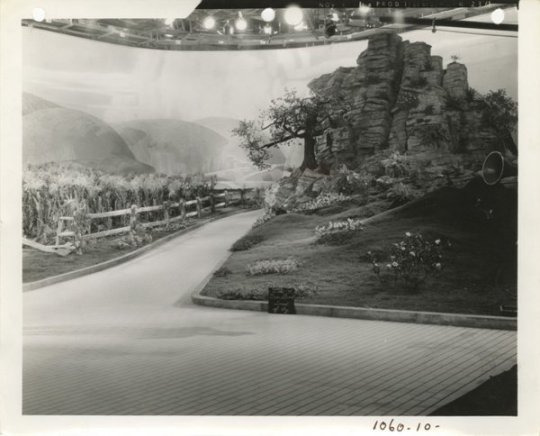
First, let’s talk about Noel Langley.
A writer of bestselling novels, it didn’t take long for Langley to get a job in Hollywood. By the time he was chosen to work on The Wizard of Oz, he already had multiple scripts under his belt. As scriptwriter, his other job was to adapt the original novel, and in so doing contributed some of the major changes that would go on to help define the film, such as the ruby slippers, the dream ending, and the idea of the Kansas Kounterparts.
Unfortunately, he also contributed a lot of other things that were decidedly less helpful, introducing new elements and characters that didn’t fit well with the overall story, such as the Cowardly Lion being originally a man turned into a lion. Other changes included adding a princess, prince and dragon, the Flying Monkeys being heroic, Aunt Em being a cruel, hard woman who was responsible for wanting Toto put down, and worst of all, a severe trimming of Dorothy’s screentime. (?!?)
Convinced he was finished, Langley turned in his script in June of 1938.
MGM had other plans.
Cue the damage control team: Edgar Allen Woolf and Florence Ryderson. Their job: cut away the weird stuff in Langley’s script, while retaining the dialogue.
Did it work?
Mostly.
Apparently Woolf and Ryderson got a little carried away with their editing, ending with another incongruous mess of a script. Getting desperate, MGM called Langley back to edit the edit of his original script. Langley immediately began to pull out as much of the Woolf and Ryerson edits as he possibly could before MGM announced that it was finished. The script was taken out of Langley’s hands again, and turned over to production. Revisions took care of the rest, slowly working the script into the story that we know and love today.
Casting didn’t go much better.
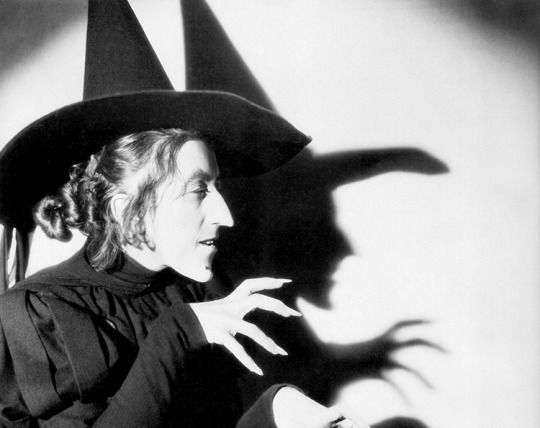
After failing to get Gale Sondergaard or Edna Mae Oliver as their Wicked Witch, MGM turned to Margaret Hamilton, who was an enormous fan of the original book. Hamilton, as a single mother, was concerned about working hours, and got into an argument with the studio over guaranteed work time, accepting the role of the Wicked Witch three days before filming was supposed to start. Her original contract of five weeks of work turned into a long, arduous three months, during which she suffered severe burns during the Wicked Witch’s fireball exit from Munchkinland. (Watch the scene in the movie, the smoke is a little early and the trapdoor a little visible; it’s the rehearsal footage.) After her recovery, she refused to do any more stunts. As a result, during the ‘Surrender Dorothy’ scene, her stunt double was seriously burned herself. On top of that, Hamilton couldn’t eat in costume due to the copper in her makeup, and her skin was tinged green for weeks after filming.
The problems didn’t stop with the villain. The original casting for the Scarecrow and Tin Man wasn’t easy either.
Buddy Ebsen was the original choice for the Scarecrow, and Ray Bolger was initially cast as the Tin Man. Bolger, a huge fan of the Scarecrow (Fred Stone) from 1902 stage adaptation of The Wizard of Oz, asked to trade roles. This went fine for Bolger, (clearly) but Ebsen? Not so much.
It turned out during filming that Ebsen had a severe reaction to the aluminum powder used in the makeup, landing him in the hospital. MGM scrambled for a new Tin Man and, after re-designing the makeup using less dangerous metallic greasepaint, ended up with Jack Haley. Even so, it was still a struggle. As the scenes were all shot on MGM lots in Hollywood, (not a single outdoor shot in the film!) it was beastly hot due to the intense stage-lighting, which also caused problems with costuming. Bolger, while being able to eat (liquids) in the makeup, had to wear a rubber mask that cut off moisture and air, causing his skin to crack and bleed. The mask left a pattern on his face that took over a year to fade after filming. Bert Lahr’s lion costume (made of real lion skin) was a problem as well. Costume designers made two identical suits for him due to the extreme heat; while he soaked one in sweat, the other suit was being dried. In-between shots, he had to remove his entire costume to stand in front of a fan just to avoid heatstroke. On top of that, he couldn’t eat anything except through a straw, as anything more involved would have meant more time in the makeup chair to work on the face appliances. Meanwhile, Jack Haley, their replacement Tin Man, was unable to sit down due to the makeup, being forced to lean to rest. He also suffered an eye-infection due to the makeup.
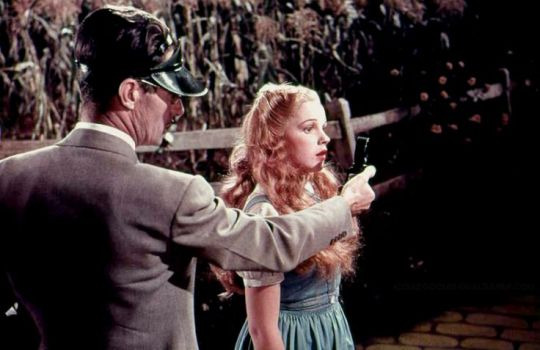
Even the main lead had it rough. MGM went through a few names before settling on Judy Garland (Shirley Temple and Deanna Durbin). 16 year-old Garland not only had her chest bound painfully tight to appear as a pre-teen girl, but also originally was put into a frumpier dress than seen in the final film, as well as being blonde for a short period of time. During production she was also put into tacky baby-doll makeup that was thankfully changed, and perhaps most unfortunately, the iconic ruby slippers were extremely painful to wear, to the point where Garland only wore them in shots where they would be visible. The rest of the time, she wore black shoes, which not only cut down on her pain, but also protected the slippers from wear and tear.
This was all made worse by the fact that hours were from 4 AM to 8 PM on a short day.
If you think that was a mess, wait until you hear about the director problems.
So The Wizard of Oz was obviously a little different than usual behind-the-scenes, and that extended to its director, or in this case, directors. During the course of production, MGM assigned no less than five total (main) directors to this movie. Let’s start with the first one, announced in June of 1938: Norman Taurog.
Taurog was a former child actor turned director, winning the Oscar for directing Skippy in 1931. He knew the game and how to play it, being the youngest man to ever win an Oscar for directing, and having over 180 movies to his name. He seemed like an obvious choice, right?
He was out in two months. During this time, the crew finished initial casting and set-construction, but no actual shooting was done. Taurog was replaced by a man named Richard Thorpe, under whom shooting began. Twelve days later, Thorpe was out too, and everything filmed during his tenure was scrapped and reshot later. (He was the one responsible for Judy Garland’s ludicrous baby-doll makeup.)
Next on the scene was George Cukor, whose job it was to get the film’s look closer to what we’d be more familiar with later. Cukor was a very famous and successful director with MGM, good with both musicals and adaptations. He re-designed Dorothy’s appearance, told Garland to ‘just be herself’, and was promptly removed from production after one week, sent to work on MGM’s other big project: Gone with the Wind.
Enter the best-known and most often credited director for this film: Victor Fleming.
Fleming was an experienced director, and turned out to be exactly what this movie needed to keep afloat. Despite the fact that most of the cast accidents happened during his three-and-a-half month tenure, Fleming miraculously calmed the storm, shooting from November 1st in 1938 to February 17th of 1939, until he too was shuttled off of the production: being moved to finish directing Gone with the Wind after the departure of former Oz director George Cukor. Fleming remains the only director credited on the actual movie itself.
Only the scenes in Kansas were left. Last, but not least, director King Vidor stepped up to the plate, filling in the remaining months until showtime. Vidor, another well-known Hollywood director with almost eighty movies under his belt, joined the team for the final stretch. He was responsible for the brown-and-white sepia look for Kansas, and in a way, having another director for those scenes worked out pretty well, as the sequences in Kansas and the sequences in Oz were supposed to be very different. (Miscellaneous other scenes were directed by producer Mervyn LeRoy, whose idea it was to make this movie in the first place. All total, we’re looking at around five or six directors for this movie.)
In the end, Fleming got the credit for both The Wizard of Oz and Gone with the Wind, despite the revolving-door directing that both films experienced, but then again, that was a part of MGM.
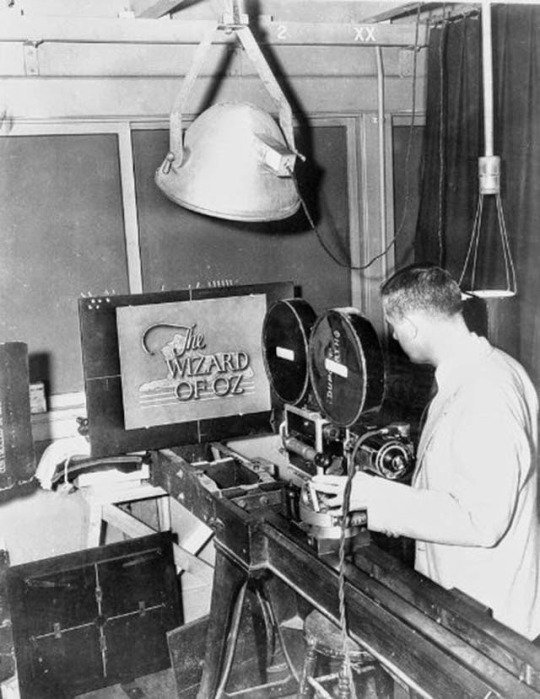
In the 1930s, MGM was the undisputed king of the movies, and The Wizard of Oz came along at their peak. In fact, being made by MGM was probably the only thing that saved it. With a tagline like ‘More stars than there are in heaven’, they could afford to put rising star Judy Garland in center stage among an all-star cast. Their specialties were big-budget extravaganzas, movie experiences that often used the brand new way to make the visuals pop: Technicolor.
MGM was not only used to wowing audiences, it was good at it.
In the era of the Depression, escapism at the movies was the way to go, and this studio in particular knew how to use their methods: glamourous films filled with glamorous people, whose problems, if they had any, were far, far away from the problems actually dealt with by people at the time. The formula worked, and the studio generated film after film like this. With a decent success rate, MGM could afford to shuffle directors and screenwriters around. Only through MGM was The Wizard of Oz even possible.
In the end, despite the hardship and the close calls (Somewhere Over the Rainbow was almost cut from the final film!), The Wizard of Oz was released in August of 1939, and went on to be one of the most famous and well-loved films of all time, and deservedly so. Originally greenlit to try to follow in the footsteps of the first animated success at a little company run by Walt Disney, The Wizard of Oz became the most iconic movie of all time, standing on its own for eighty years. Not bad for a box office bomb and production nightmare.
Well, it’s almost time for curtains on our analysis of The Wizard of Oz. Join me one last time as we take one last look at this classic film: combining the facts with the feelings. Next time it’s our final thoughts.
Thank you so much for reading! Don’t be afraid to drop an ask, and I hope to see you in the next article!
#The Wizard of Oz#The Wizard of Oz 1939#Film#Movies#PG#1939#30s#Adventure#Fantasy#Judy Garland#Margaret Hamilton#Frank Morgan#Ray Bolger#Jack Haley#Bert Lahr#Billie Burke#Victor Fleming
13 notes
·
View notes
Photo
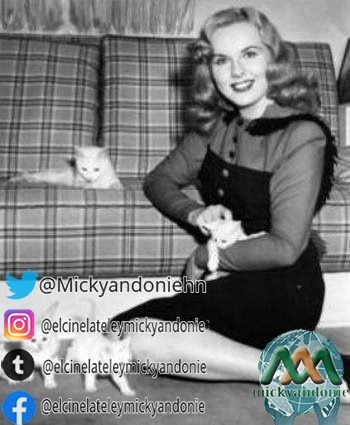

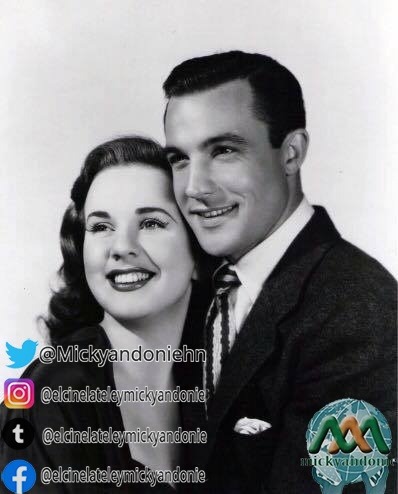

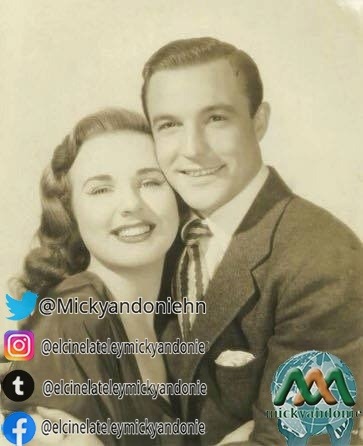





DEANNA DURBIN
α:4 de diciembre de 1921 Ω:17 de abril de 2013
Deanna Durbin (4 de diciembre de 1921, Winnipeg, Manitoba, Canadá - 17 de abril de 2013, París, Francia) fue una actriz y cantante canadiense que conoció gran fama como adolescente en musicales y comedias de Hollywood. Filmó entre 1936 y 1948 especializándose en roles de ingenua a la que sumaba una bella voz de soprano ligera. Edna Mae Durbin, su verdadero nombre, nació el 4 de diciembre de 1921 en el Grace Hospital de Winnipeg (Canadá) de padres británicos, con quienes se trasladó a California en su infancia. Fue "descubierta" por la Metro Goldwyn Mayer a través de un concurso escolar de canto en Los Ángeles, a donde se había trasladado su familia, con el objetivo de hacer una "biopic" de la cantante de ópera Ernestine Schumann-Heink, pero finalmente debutó en el cine con un corto del estudio que coprotagonizó otra adolescente de no menos fulgurante carrera, Judy Garland, "Concierto al aire libre" (Every Sunday). Ambas rondaban los 15 años. Con papeles de adolescente en producciones edulcoradas, muy al gusto de la época, logró gran popularidad y llegó a salvar a los Estudios Universal de la bancarrota con películas como Reina a los catorce años o Mentirosilla (Mad about Music). Durbin siguió unida a Universal a lo largo de su vida profesional que se prolongó por más de una veintena de títulos, que también le dieron fama fuera de Estados Unidos. Tanto Winston Churchill como Benito Mussolini se contaron entre sus admiradores, y la tristemente famosa Anna Frank tenía una foto suya colgada en la pared del escondite en el que intentaba escapar de los nazis. En 1938 recibió, junto a Mickey Rooney, un Premio Óscar juvenil especial por «su significativa contribución a llevar a la pantalla el espíritu y la personificación de la juventud». A los 25 años, era la segunda mujer mejor pagada de Hollywood, por detrás de Bette Davis, y su club de fans era el más numeroso durante los años cuarenta. Su última película fue For the Love of Mary, de Frederick De Cordova, en 1948. A los 28 años se alejó de los platós al casarse con el director francés Charles David, su tercer matrimonio, del que tuvo su segundo hijo, y desapareció de la vida pública. «No podía ser siempre la pequeña miss Fixit que irrumpió en la canción», dijo entonces. Se recluyó con su familia, hijos, nietos y bisnietos, en la localidad francesa de Neauphle-le-Château, cerca de París. Durante décadas rechazó todas las ofertas para regresar al cine. Su voz de soprano fue descrita a menudo como «bella y natural», y su versión del aria "Un bel di vedremo", de la ópera Madama Butterfly, fue un éxito de ventas. Su popularidad hizo que se crearan muñecas con su imagen, y su primer beso en pantalla fue todo un acontecimiento para los periódicos de la época.
FILMOGRAFIA
1945 La dama del tren
1944 Christmas Holiday
1943 La hermanita del mayordomo
1937 One Hundred Men and a Girl
1941 Casi un angel
1936 Los tres diablillos
1936 Every Sunday
1939 First love 1939
1943 Hers to Hold
1947 I'll Be Yours
1948 Up in Central Park
1938 Reina a los 14 años
1939 Su última diablura
1943 Mi encantadora esposa
1946 Su primera noche
1941 Mujercita
1938 Loca por la música
1947 El diablillo ya es mujer
1948 El diablillo ya es mujer
1 note
·
View note
Text
Wow
Deanna Durbin or Judy Garland: 'Drop the Fat One'
Deanna Durbin was born Edna Mae Durbin to British parents on Dec. 4, 1921, in Winnipeg, in the Canadian province of Manitoba. Edna Mae's time in Canada, however, was brief. She actually grew up in the Los Angeles area, where her father, formerly a Canadian Pacific railway blacksmith, set up shop shortly after her birth.
After years of voice training, minor but persistent agent Jack Sherrill got the 14-year-old Edna Mae to test for the voice of Snow White in Walt Disney's animated feature Snow White and the Seven Dwarfs. But Disney turned her down because she sounded too mature.
Shortly afterwards, she was cast (as “Edna”) in the 1936 Metro-Goldwyn-Mayer one-reeler Every Sunday, in which she got to sing with fellow 14-year-old MGM hopeful Judy Garland (as “Judy”). The extended screen test was supposed to showcase the quite different vocal talents of Durbin and Garland – the former a lyric soprano; the latter a vibrant contralto. At the time, Durbin signed a short-term contract for a reported $150 a week to play the young Ernestine Schumann-Heink in a projected biopic of the opera singer.
But would MGM have use for two teen female singers, however different their styles? According to Hollywood legend, MGM mogul Louis B. Mayer told his acolytes, “Drop the fat one,” meaning Judy Garland. Due to a misunderstanding, Deanna Durbin was let go. Another version of the story has Mayer wanting to keep them both, but by the time his decision was made Durbin's contract had expired.
Either way, it was a traumatic experience for the teenager. “I was crying bitterly and decided that I'd kill myself,” she would later recall. “I couldn't go back to school a failure.”
2 notes
·
View notes
Photo

Happy 91st Birthday Deanna Durbin! (Edna Mae too...)
1 note
·
View note
Text
’The 2019 Winnipeg Fringe Festival is underway. I’m writing up two shows in this post. The first is Ingenue, which stars Melanie Gall. Ingenue centers around the stories and songs associated with Deanna Durbin and Judy Garland.
*Show times for both of the shows listed here can be found by clicking on the show’s link in the copy below.
The Ingenue and Opera Mouse posters outside the Manitoba Theatre Centre.
Fringe Festival Traditions
Ingenue will mark the sixth show by Ms. Gall that I will attend. One of the remarkable things about her Fringe career is that she is always mounting new shows. She does repeat some of her others as well, but she is always stretching herself as a performer.
One of my Fringe Traditions is Butter Chicken form India Palace.
Attending a Melanie Gall show is one of my Fringe Festival traditions. There are a couple of others. One is my visit to the India Palace food tent. Every year I go with either an order of Curry Beef or Butter Chicken. This is a quick, tasty meal. I also go for a visit to the beer garden while I eat. This year’s sponsor is Sleeman’s, and while it’s OK, after the beer at Sookram’s, it’s a bit of a letdown.
Rain Delay before Ingenue
After eating I contemplated running home to drop some things off. However, just as I started to leave, it started pouring down rain. Luckily the beer garden is not far from Across the Board Game cafe. Ducking in there allowed me to wait out the rain delay while enjoying a piece of Saskatoon Berry Pie, and a hot chocolate. Depending on how your Fringe viewing is scheduled, A meal and a board game from Across the Board is a great way to break it up.
#gallery-0-7 { margin: auto; } #gallery-0-7 .gallery-item { float: left; margin-top: 10px; text-align: center; width: 50%; } #gallery-0-7 img { border: 2px solid #cfcfcf; } #gallery-0-7 .gallery-caption { margin-left: 0; } /* see gallery_shortcode() in wp-includes/media.php */
A rich and warming cup of Hot Chocolate.
A satisfying dessert of pie and ice cream.
Ingenue
Ingénue tells the story of Deanna born (Edna Mae) Durbin, one of the biggest start of 1930s and 40s Hollywood. Her story starts here in Winnipeg, where she lived for two years, before her family moved to Hollywood. Despite here short stint in this town, she is still known as Winnipeg’s Sweetheart. There, as a young teen, she wound up under contract to MGM studios and Louis B. Mayer.
Every aspect of life was under studio control, including education. As a result Durbin attended school alongside the likes of Mickey Rooney and Judy Garland.
It’s Durbin’s relationship with Garland that forms the storyline of Ingénue. The show is set in Paris around the time of Garland’s death. Durbin, recounts her career and friendship with Garland to a reporter(never seen), who came to Paris to track Durbin down.
On stage with Melanie after the show.
All About Deanna
Several things make this a really great show. First and foremost, there is Deanna Durbin. Despite being on of the biggest stars of her day, she’s large forgotten. She was a remarkable woman, who carved her own path through the Golden Age Hollywood Studio system. Gall does a fine job of capturing this element of her life. This also serves to contrast with Garland’s story. One amazing part of the Deanna Durbin story is that she walked away from Hollwood and fame while still in her late 20s.
The back of the Ingenue program displaying some of Galls available CDs
Talking with Melanie after the show, it is clear that Ingénue is the most personal of the shows that she has done to date. She worked for six months getting the script done and it shows. This is the most complete script and plot of any of her shows.
Durbin and Garland together by the piano.
As always, Gall’s singing is superb. One of the things I always appreciate about her shows is that she pays homage rather than imitates. For example, on Somewhere Over the Rainbow, she uses her own phrasing rather than copying Garland’s.
Being a Fringe show Ingenue is limited in the ability to take on Durbin’s life. Given Gall’s passion for her subject, I hope she gets a chance to offer a future, deeper look at Durbin’s story.
Ingenue Location
The Tom Hendry warehouse where the show is stage is a great location. One that allows for the full strength of Gall’s performance to shine through. She wrote the play with this theatre in mind.
This is definitely a must see Fringe Show. The singing is great, and the story shines a light on the life of a remarkable woman from Hollywood’s Golden Stage. Tell all of your friends to take in this show. The show is entertaining and educational, and should leave you and your friends talking about it and Deanna Durbin after the show is all over.
After the show I headed off for a beverage at the King’s Head, along with Melanie and Eden Ballantyne. Ballantyne is a friend of Melanie, and also a Fringe Performer. Eden is a storyteller and I really enjoyed him last year when he starred with Gall in Carmen and Don Jose. While enjoying our beverages we were joined by Fringe Fest veteran Jem Rolls.
Mix Tapes From My Mom
My Fringe going actually got off to a start on Tuesday. I happened to stop off for an iced coffee at X-Cues. I knew they were hosting a show, but I didn’t realize they were offering a preview for Fringe volunteers.
The show they were putting on is Mix Tapes from My Mom, featuring Cory Wojcik. I wandered in shortly after the show started. I sat at the bar, and didn’t get all of the details of the show, but I got the main story.
A Day in the Life of Cory
The story revolves around one day in Cory’s life. A day unlike any other. One at which his relationship with his mother is at the center. The show is at times hilarious, poignant, tragic, and sad. Yet ultimately it is an uplifting show. This uplift comes from the honesty that is at the heart of Wojcik’s story.
Wojcik and his back up band, deliver a great set of songs, interspersed with Wojcik’s account of that memorable day. Wojcik’s a naturally funny guy, and that humour shows up time and again in the show. The show comes with a language warning, but the language is essential to the character of the show. Mix Tapes From My Mom is must see Fringe.
X-Cues offers meals, which you can order and enjoy as you watch the show.
Check out my First and maybe only Fringe Review for 2019. Ingenue-Mix Tapes From My Mom @WestEndCassidy @CoryWojcik @WinnipegFringe #WinnipegFringe ’The 2019 Winnipeg Fringe Festival is underway. I'm writing up two shows in this post. The first is Ingenue, which stars…
#Deanna Durbin#Exchange District#Judy Garland#MGM#Tom Hendry Theatre#Universal Studios#Winnipeg Fringe Festival
0 notes
Text
17 aprile … ricordiamo …
17 aprile … ricordiamo …
#semprevivineiricordi #nomidaricordare #personaggiimportanti #perfettamentechic
2022: Catherine Spaak, attrice, cantante e conduttrice televisiva belga naturalizzata italiana. Figlia dell’attrice Claudie Clèves e dello sceneggiatore Charles, e sorella dell’attrice e fotografa Agnès. Si è sposata con l’attore Fabrizio Capucci, da cui ha avuto una figlia Sabrina, con Johnny Dorelli, da cui avrà un figlio Gabriele, con l’architetto Daniel Rey e infine con Vladimiro Tuselli.…

View On WordPress
#17 aprile#Barbara Bush#Barbara Pierce Bush#Catherine Spaak#Doris May Green#Doris Roberts#Edna Mae Durbin#Gilles Remiche#Hollis Resnik#Lady McCartney#Lillian Lorraine#Linda Louise Eastman#Linda Louise McCartney#Linda McCartney#Michael Sarrazin#Oleg Cassini#Oleg Cassini Loiewski#Ricordiamo#Sergio Fantoni#Toni Frissell
1 note
·
View note
Link
Check out this listing I just added to my Poshmark closet: Deanna Durbin 24 Greatest Hits.
0 notes
Link
Check out this listing I just added to my Poshmark closet: Deanna Durbin 24 Greatest Hits.
0 notes
Text
17 aprile … ricordiamo …
17 #semprevivineiricordi #nomidaricordare #personaggiimportanti #perfettamentechic #felicementechic #lynda
2020: Sergio Fantoni, attore, doppiatore e regista italiano. Figlio d’arte (anche il padre Cesare e la madre Afra Arrigoni sono stati interpreti teatrali), è stato attivo nel mondo del teatro, del cinema, della televisione e della radio dai primi anni cinquanta. Nel 1961 sposò la collega Valentina Fortunato nel 1954: testimoni di nozze furono Luchino Visconti per lui ed Ennio De Concini per lei.…

View On WordPress
#17 aprile#Barbara Bush#Barbara Pierce Bush#Doris May Green#Doris Roberts#Edna Mae Durbin#Lady McCartney#Linda Louise Eastman#Linda Louise McCartney#Linda McCartney#Michael Sarrazin#Oleg Cassini#Oleg Cassini Loiewski#Ricordiamo#Sergio Fantoni#Toni Frissell
1 note
·
View note
Text
17 aprile … ricordiamo …
17 aprile … ricordiamo …
#semprevivineiricordi #nomidaricordare #personaggiimportanti #perfettamentechic
2020: Sergio Fantoni, attore, doppiatore e regista italiano. Figlio d’arte (anche il padre Cesare e la madre Afra Arrigoni sono stati interpreti teatrali), è stato attivo nel mondo del teatro, del cinema, della televisione e della radio dai primi anni cinquanta. Nel 1961 sposò la collega Valentina Fortunato nel 1954: testimoni di nozze furono Luchino Visconti per lui ed Ennio De Concini per lei.…

View On WordPress
#17 aprile#Barbara Bush#Barbara Pierce Bush#Doris May Green#Doris Roberts#Edna Mae Durbin#Lady McCartney#Lillian Lorraine#Linda Louise Eastman#Linda Louise McCartney#Linda McCartney#Michael Sarrazin#Oleg Cassini#Oleg Cassini Loiewski#Ricordiamo#Sergio Fantoni#Toni Frissell
0 notes